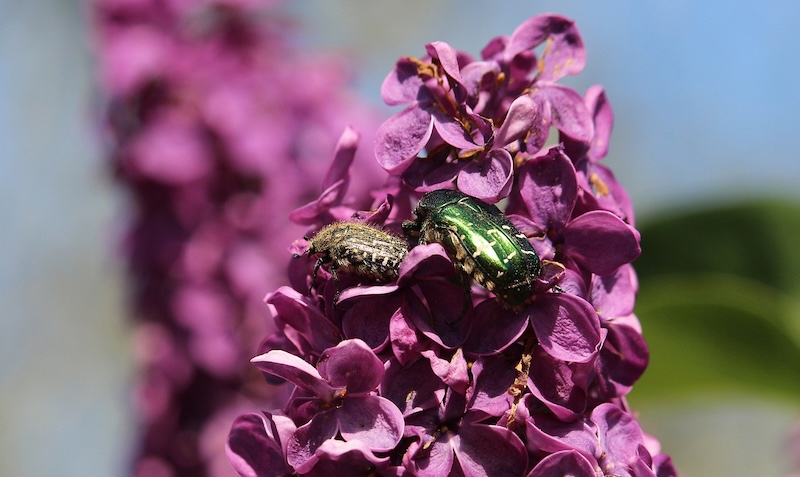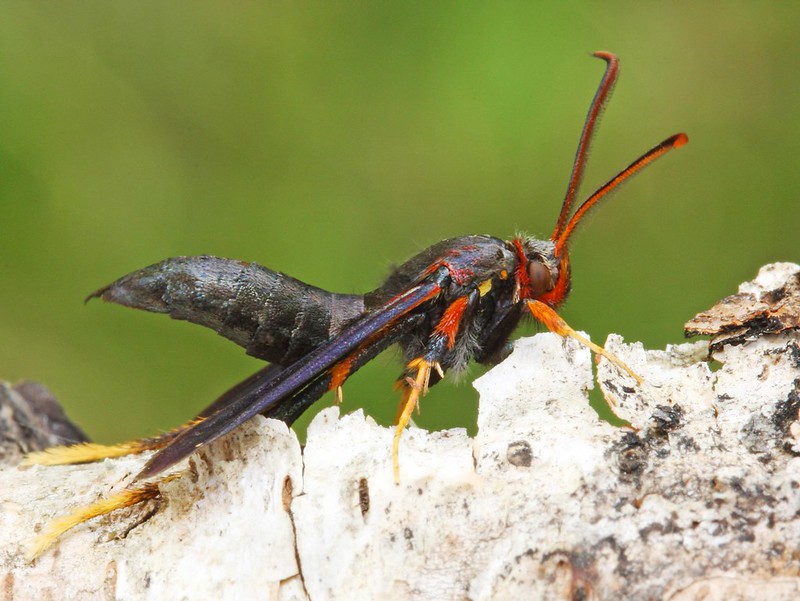Pests come in all shapes and sizes and are potentially trouble for a lilac shrub. Lilacs are easy to grow and do not often suffer from bugs and other pests, but an infestation can stunt growth and severely damage a plant. Fortunately, the pests most likely to damage lilac shrubs are some of the easiest to treat. Learn more about some common insect pests that damage lilacs and find out how to prevent an infestation.

Common Lilac Pests
Caterpillars
Caterpillars are insects in the larval stage that go on to become a butterfly or moth. These bugs can measure a few millimeters or several inches long and commonly eat foliage. Irregularly shaped holes in leaves are the telltale sign of caterpillar damage. Lilacs use their leaves to collect sunlight and conduct photosynthesis. Plants that sustain damaged leaves may experience stunted growth, and lilacs can die in extreme instances of devastating damage.
Treating Caterpillars on Lilac
Pluck caterpillars from a lilac shrub as you see them to put a stop to damage immediately. Check under leaves to track down as many of these pests as possible. Spray the shrub with horticultural oil or a mixture of dish soap and water to prevent caterpillars from returning, and destroy any eggs on the shrub. Help a damaged lilac bounce back by applying a balanced fertilizer to encourage new growth.

Preventing Caterpillars on Lilac
There is no guaranteed way to prevent caterpillars. To ward off these hungry pests, make a shrub less hospitable by spraying it with horticultural oil. Remove broken branches, foliage, and debris from the ground around the shrub to eliminate areas where these pests may lay eggs.
Borers
Borers are a type of worm or pest in a larval stage that eat their way into and through the stems and foliage of plants. The larvae of the clearwing moth are a type of borer that often target lilacs. Ash borers are another pest that threatens lilacs. These pests live inside the plant and feed on it, causing extensive damage. Borers can stunt plant growth and even kill lilacs. Holes in the trunk and wilted foliage are signs of damage from borers on lilacs.
Treating Borers on Lilac
Treat an infested lilac by applying an insecticide. Getting rid of borers already in the shrub is challenging, but applying insecticide may help, and it will prevent new pests from getting near the lilac.

Photo by David D. Beadle
Preventing Borers on Lilac
The best way to prevent borers from damaging lilacs is to maintain a healthy plant. Ensure the shrub receives adequate sunlight and water and apply fertilizer as needed. Be mindful not to damage the bark when using a lawn mower or weedeater. Borers can more easily access a shrub when the bark is damaged.
Scales
Scales are tiny insects that appear in clusters on stems and leaves. These pests are often found on the underside of a leaf, allowing them to hide out undetected until the signs of their damage become apparent.
Treating Scales on Lilac
A scale infestation isolated to one area can be treated by removing the entire section. Removal is the best option when the pests are only found on one or two branches. Destroy the infested branches to prevent another outbreak. These pests are tiny and are unlikely to only be in one area, so follow up pruning with an application of horticultural oil or insecticidal soap.
Start treatment with horticultural oil or insecticidal soap when the pests are found throughout the plant. It often takes several applications of horticultural oil to wipe out an infestation. Continue monitoring the plant after identifying the pests, and reapply the treatment weekly until there are no signs of their presence.
Preventing Scales on Lilac
Prevent scale on lilacs by routinely pruning the plants to remove overgrowth and improve air circulation. Increased airflow makes the shrub less welcoming to scale, so properly spacing plants and keeping up with pruning can prevent an outbreak. Avoid overfertilizing the shrubs, which can lead to excess tender growth, which attracts sap suckers.
Lilac Pests Chart
|
Pest |
Identifying |
Treating |
|
Caterpillars |
Larval stage of a butterfly or moth |
Pluck caterpillars and spray with hoticultural oil or a mixture of dish soap |
|
Borers |
Worm or pest in a larval stage |
Apply insecticide on infected areas |
|
Scales |
Small, immobile insects that often resemble tiny bumps |
Destroy infested branches to prevent outbreak |
Sources: "Lilac (Syringa)." University of Kentucky. uky.edu
 |
Author Alison Cotsonas - Published 12-21-2023 |
